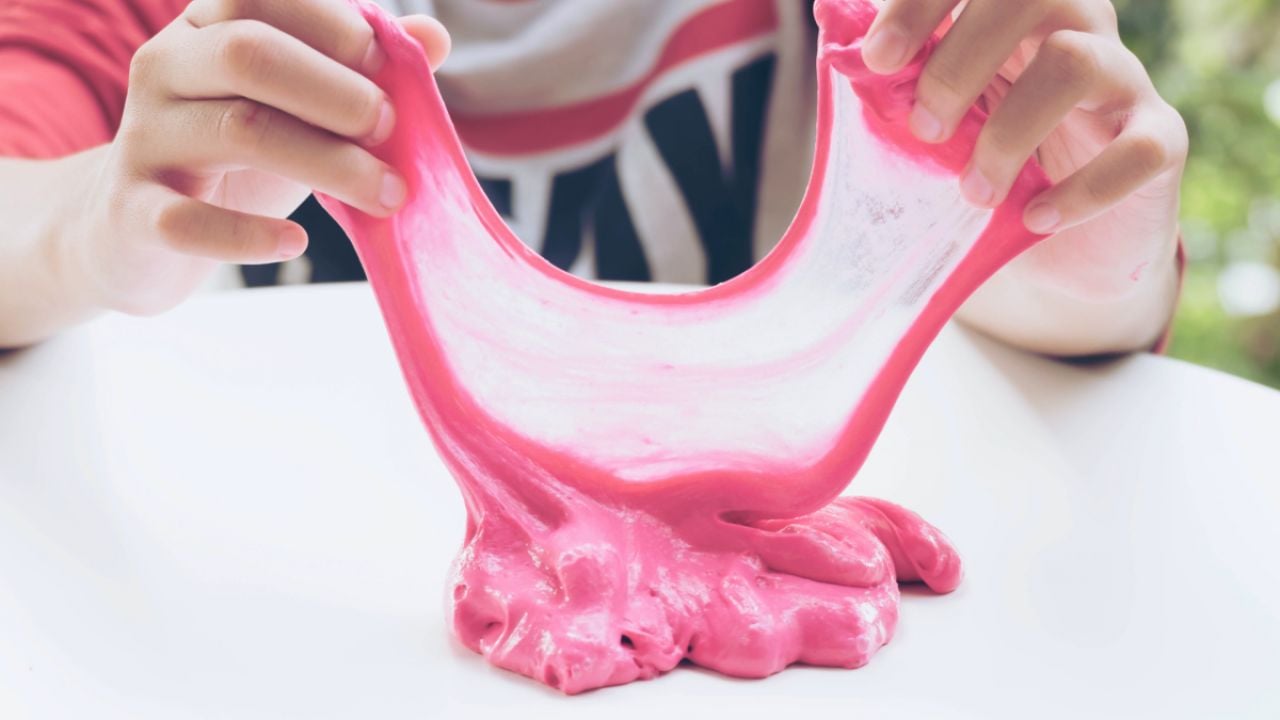
If you have a child between the ages of 6 and 12, chances are you’ve been subjected to the homespun chemistry experiment that is slime: a combination of ordinary school glue, baking soda and borax – a common laundry detergent additive. Thanks to a chemical reaction between these three ingredients, you magically have pliable slime that kids love to stretch, squeeze and then forget on the dining room table.
The trouble is that borax is not safe for children, especially when they touch it for long periods of time, like they do when mixing and playing with slime.

What’s wrong with borax, you ask?
First of all, borax – aka boric acid, sodium borate, sodium tetraborate or disodium tetraborate – is not classified as a skin irritant, but some borates are eye irritants. There have been multiple media reports of children who had burns on their hands after making and playing with slime, but it is unclear why these burns have occurred.
Secondly, and even more concerning, borax can be toxic in high doses – it’s used to kill ants and other pests in addition to its use in laundry detergent. Borax exposure can result in hormone disruption, including potential damage to the male reproductive system.
What about using contact solution instead of borax?
Real talk: There is no such thing as a safe slime recipe.
I wanted to write an article about slime, particularly making slime without borax. But, sadly, EWG’s experts cannot recommend contact solution as a safer alternative for making slime.
Why? Because even small amounts of boric acid can be unsafe for children.
In 2016, Health Canada released a statement with a similar warning, advising people to avoid any homemade recipe using boric acid, as overexposure “has the potential to cause developmental and reproductive health effects.” Because we are often exposed to boric acid through other sources – in our food, water and home products – people should avoid unnecessary exposures, especially children and pregnant women.
“The concern is not with any one product, but rather multiple exposures from a variety of sources,” Health Canada said.
But, you might be thinking, contact solution is Food and Drug Administration approved! We put it in our eyes!
Yes, this is true, but when contact solution is used in slime recipes it can be added in much larger amounts than what is used in a contact lens case. The amount of contact solution is proportionate to the amount of glue – the more glue, the more solution necessary.
And contact solution packaging does not indicate the amount (or percentage) of boric acid in the product – only that it is an ingredient. This makes it impossible to know if it truly is a “trace amount” as many slime recipes claim, or if it’s a lot.
Between unknown amounts of solution in the recipe, unknown amounts of boric acid in the solution and the fact that children are squishing the ingredients between their fingers for extended periods of time – that’s the fun! – kids could be exposed to a lot of boric acid.
I wish this weren’t true. I wish we had an EWG-approved, kid-safe slime recipe for you. But you need borax to make the slime magic happen, and it’s just not safe.
Do you have a tactile activity your kids like just as much as making slime? Let us know on our Facebook page.



